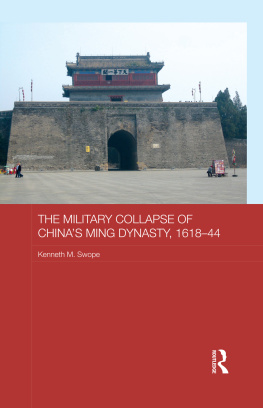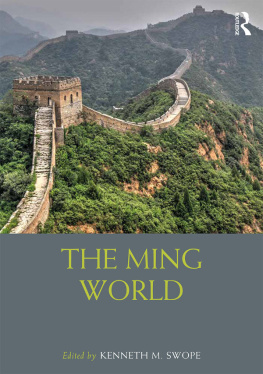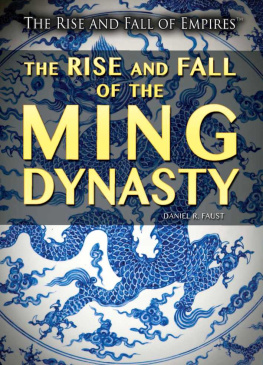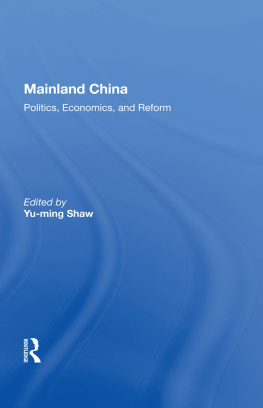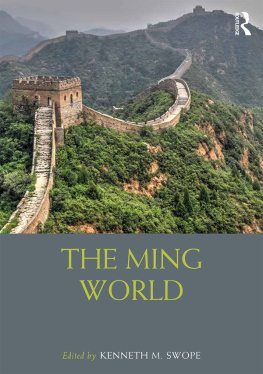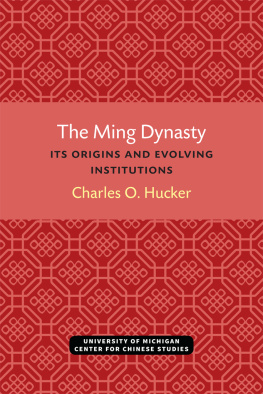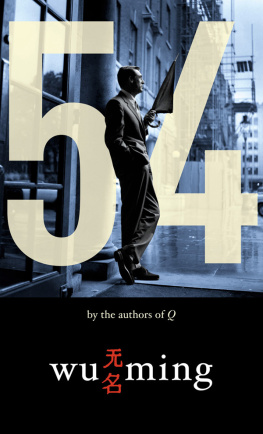
The Military Collapse of Chinas Ming Dynasty, 161844
This book examines the military collapse of Chinas Ming Dynasty to a combination of foreign and domestic foes. The Mings defeat was a highly surprising development, not least because as recently as in the 1590s the Ming had managed to defeat a Japanese force considered to be perhaps the most formidable of its day when the latter attempted to subjugate Korea en route to a planned invasion of China. In contrast to conventional explanations for the Mings collapse, which focus upon political and socio-economic factors, this book shows how the military collapse of the Ming state was intimately connected to the deterioration of the personal relationship between the Ming throne and the military establishment that had served as the cornerstone of the Ming military renaissance of the previous decades. Moreover, it examines the broader process of the militarization of late Ming society as a whole to arrive at an understanding of how a state with such tremendous military resources and potential could be defeated by numerically and technologically inferior foes. It concludes with a consideration of the fall of the Ming in light of contemporary conflicts and regime changes around the globe, drawing attention to climatological factors and developments outside state control. Utilizing recently released archival materials, this book adds a much needed piece to the puzzle of the collapse of the Ming Dynasty in China.
Kenneth M. Swope is Professor of History and Fellow of the Center for the Study of War and Society at the University of Southern Mississippi, USA. He specializes in the military, political, and social history of Ming China, and he also conducts research in comparative early modern military history and East Asian international relations. His books include Warfare in China Since 1600 (2005) and A Dragons Head and a Serpents Tail: Ming China and the First Great East Asian War, 15921600 (2009).
Asian states and empires
Edited by Peter Lorge
Vanderbilt University
The importance of Asia will continue to grow in the twenty-first century, but remarkably little is available in English on the history of the polities that constitute this critical area. Most current work on Asia is hindered by the extremely limited state of knowledge of the Asian past in general, and the history of Asian states and empires in particular. Asian States and Empires is a book series that will provide detailed accounts of the history of states and empires across Asia from earliest times until the present. It aims to explain and describe the formation, maintenance and collapse of Asian states and empires, and the means by which this was accomplished, making available the history of more than half the worlds population at a level of detail comparable to the history of Western polities. In so doing, it will demonstrate that Asian peoples and civilizations had their own histories apart from the West, and provide the basis for understanding contemporary Asia in terms of its actual histories, rather than broad generalizations informed by Western categories of knowledge.
The Third Chinese Revolutionary Civil War, 194549
An analysis of communist strategy and leadership
Christopher R. Lew
Chinas Southern Tang Dynasty, 937976
Johannes L. Kurz
War, Culture and Society in Early Modern South Asia, 17401849
Kaushik Roy
The Military Collapse of Chinas Ming Dynasty, 161844
Kenneth M. Swope
The Military Collapse of Chinas Ming Dynasty, 161844
Kenneth M. Swope

First published 2014
by Routledge
2 Park Square, Milton Park, Abingdon, Oxon OX14 4RN
Simultaneously published in the USA and Canada
by Routledge
711 Third Avenue, New York, NY 10017
Routledge is an imprint of the Taylor & Francis Group, an informa business
2014 Kenneth M. Swope
The right of Kenneth M. Swope to be identified as author of this work has been asserted by him in accordance with the Copyright, Designs and Patents Act 1988.
All rights reserved. No part of this book may be reprinted or reproduced or utilised in any form or by any electronic, mechanical, or other means, now known or hereafter invented, including photocopying and recording, or in any information storage or retrieval system, without permission in writing from the publishers.
Trademark notice: Product or corporate names may be trademarks or registered trademarks, and are used only for identification and explanation without intent to infringe.
British Library Cataloguing in Publication Data
A catalogue record for this book is available from the British Library
Library of Congress Cataloging in Publication Data
The military collapse of Chinas Ming Dynasty, 1618-44 / by Kenneth M.
Swope.
pages cm. (Asian states and empires)
Includes bibliographical references and index.
ChinaHistoryLi Zicheng Rebellion, 1628-1645.
ChinaHistoryMing dynasty, 1368-1644. ChinaHistory, Military960-1644. I. Title.
DS753.65.S93 2013
951.026dc23
2013008015
ISBN: 978-0-415-44927-4 (hbk)
ISBN: 978-0-203-79543-9 (ebk)
Typeset in Times New Roman
by Deer Park Productions
Contents
As with any work of this length and scope one invariably incurs a number of personal and professional debts and must rely on the knowledge, patience and kindness of others. One also needs the support and interest of publishers and series editors so I would first like to thank Peter Lorge of Vanderbilt University (Series Editor for Asian States & Empires) and Peter Sowden at Routledge for soliciting and accepting the manuscript proposal even knowing that it was in the early stages of development. Their continued support and encouragement as I delayed delivery was also greatly appreciated.
With respect to funding, the majority of the field research for this book was conducted in Beijing in the summer and fall of 2010. I would like to thank the American Council of Learned Societies for a generous American Research in the Humanities in China Grant (ARHC) funded by the NEH that allowed me to complete the necessary archival research in China. This grant was supplemented by sabbatical leave for the fall semester from Ball State University. While in Beijing the History Department of Beijing University served as my institutional sponsor. I would like to thank Professor Li Xinfeng for serving as my official host and for showing me around the libraries and bookstores of the capital. Guan Xiaoning helped supply all needed visas and official paperwork and got me set up after I arrived. Dong Jianzhong of Renmin University was also a great help in providing access to the excellent reading room of the Qing Research Institute on Suzhou jie, where I spent many a fine autumn afternoon poring over document collections. Special thanks go to Tom Buoye for introducing us. In addition to the libraries of Beijing and Renmin universities, a significant portion of my research was conducted at the splendidly expanded National Library of China. I would like to thank the staffs of all these fine institutions for their cordiality and assistance.
At Ball State my friends and colleagues in the History Department were supportive throughout the research and writing process. My new colleagues at Southern Miss have been equally supportive, particularly my colleagues in the Center for the Study of War & Society. It is wonderful to be in a department that places such a premium on military history where one can bounce ideas off such accomplished scholars. My friends and family have been more indirectly involved, but always curious and supportive. I have appreciated the numerous opportunities to present earlier versions of this work at conferences over the past several years in the United States and abroad. I would like to thank all my friends and colleagues for their helpful feedback, especially Jack Wills, David Kang, Ken Hall, and John Whitmore. Thanks must also go to my many friends in the Chinese Military History Society for their friendship and support over the years, particularly Peter Lorge and David Graff. Peter Lorge and Peter Sowden have been great editors to work with and have enthusiastically supported the project from its inception. Michael Hradesky of Ball State University drew the maps. All photographs were taken by myself or Jin Yun. Hilary Faulkner prepared the index.
Next page
